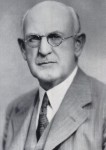![]()
In the summer of 1924, an outbreak of scarlet fever occurred in Flint, Michigan. Unable to trace it to the usual causes, particularly fresh milk, the Michigan Department of Health used a novel approach to disentangle the enigma: The 116 cases of scarlet fever were compared with 117 “controls” selected from neighbors of the quarantined cases and from patients at the City Health Center who had been treated for ailments unrelated to scarlet fever. The extraordinary culprit was ice cream, which had a frequent/occasional/none consumption prevalence of 60%, 34%, and 6% among the cases and 24%, 51%, and 25% among the controls, respectively.
The 1925 report reads, “Detailed epidemiological investigation, by means of case histories and control histories on well persons, confirmed early suspicions and established the fact that the epidemic was spread by ice cream” (Am J Hyg. 1925;5(5):669-681).
This forgotten epidemiologic study is the oldest study using the case-control design to have been resurrected thus far. The case-control study design may have been conceived simultaneously, but independently and for different purposes, in England (Janet Lane-Claypon’s 1926 report on the determinants of breast cancer) and the United States.
Alfredo Morabia. Snippets from the past: is Flint, Michigan, the birthplace of the case-control study? Am J Epidemiol. 2013;178(12):1687-90. (abstract)



